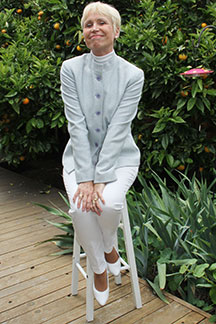Walter Ulbricht was a 20th century East German politician who always knew which side his bread was buttered on. By instinctively understanding whom to defer to and which efforts to pursue, he became East Germany’s postwar leader. Loyal to Leninist and Stalinist principles, he was described by peers and populace alike as an inflexible, dull and unlikeable man. It didn’t help that he spoke with a squeaky falsetto voice due to a childhood diphtheria infection. Still, he remained East Germany’s chief decision maker until 1971 – a period of more than twenty years. A joke made the rounds in East Germany during those years. It went like this: An airplane crashes carrying the presidents of the United States and France and the British Queen. They all perish. Which country mourns the most? The answer: East Germany because Ulbricht wasn’t on the plane.
Who was Walter Ulbricht?
Walter Ulbricht came from humble beginnings. He was born in 1893 to a tailor in Leipzig, Germany. After graduating primary school, Ulbricht trained as a cabinetmaker. Since both his parents were active in the Social Democratic Party (SPD), young Ulbricht joined the party as well. He was 19 at the time. Eight years later, in 1920, he left the SPD and joined the newly created KPD, the Communist Party of Germany. By aligning himself with the “right” people he rose swiftly through party ranks.
Walter Ulbricht’s political life
Walter Ulbricht quickly became an important member in the party. In 1923, he was elected to the Central Committee and five years later to the Reichstag (German parliament). He remained a member of the Reichstag until 1933 when the Nazis came to power. When they imprisoned other KPD leaders in connection with a high profile murder, Ulbricht fled to France, Czechoslovakia and finally Spain. Between 1937 and 1945, he settled in Moscow and resided in the famous Hotel Lux. While there, he worked on a variety of communist causes.
Walter Ulbricht – leader of East Germany
In April 1945, Soviet leader, Joseph Stalin, chose Walter Ulbricht to lead a group of party functionaries into Germany to begin reconstruction of the Communist party in Germany. Within the Soviet-occupied zone of Germany and the Soviet-occupied sector of Berlin, Social Democrats were pressured into merging with the Communist party to form the new Socialist Unity Party of Germany (SED). After the founding of the German Democratic Republic (East Germany) in 1949, Ulbricht became Deputy Chairman of the Council of Ministers. In 1950, he became General Secretary of the SED Central Committee and First Secretary in 1953. After the death of Stalin that same year, Ulbricht’s position was in danger. However, the East German Uprising of 1953 helped him to gain the Kremlin’s support. With Moscow’s backing, Ulbricht suppressed the uprising and secured his position in East Germany. From that point on, Walter Ulbricht was East Germany’s chief decision maker.
Ulbricht continued to plot his course. By 1952, he had nationalized 80 percent of the industry, which resulted in an economy that was short of consumer goods and often produced goods of shoddy quality. When his economic measures proved flawed, millions of East Germans fled to the west. Aware of the possibility of a total collapse of East Germany, Ulbricht pressured the Soviet Union in early 1961 to stop the outflow or workers and to resolve the status of Berlin. This led to the construction of the Berlin Wall, only two months after Ulbricht had emphatically denied that there were such plans when he stated, “No one has any intention of building a wall.” https://www.berlin.de/mauer/geschichte/index.en.html The Berlin Wall became a public relations disaster for Ulbricht and the Soviet Union. By the late 1960s, Ulbricht found himself more and more isolated, both at home and abroad. His refusal to work with West Germany on Soviet terms infuriated Soviet leader, Leonid Brezhnev. In 1971, Ulbricht was forced to resign from virtually all of his public functions. He was only allowed to remain head of state as Chairman of the Council of State in an honorary capacity.
Walter Ulbricht was a survivor
Image-challenged Walter Ulbricht came close to being toppled several times, but he always landed on his feet. His private life was beset with difficulties as well. Next time, I will write about his relationship with his wife, Lotte, and their daughter, Beate.
For a sneak peek at the first 20+ pages of my memoir, Walled-In: A West Berlin Girl’s Journey to Freedom, click “Download a free excerpt” on my home page and feel free to follow my blog about anything German: historic and current events, people, places and food.
Walled-In is my story of growing up in Berlin during the Cold War. Juxtaposing the events that engulfed Berlin during the Berlin Blockade, the Berlin Airlift, the Berlin Wall and Kennedy’s Berlin visit with the struggle against my equally insurmountable parental walls, Walled-In is about freedom vs. conformity, conflict vs. harmony, domination vs. submission, loyalty vs. betrayal.











